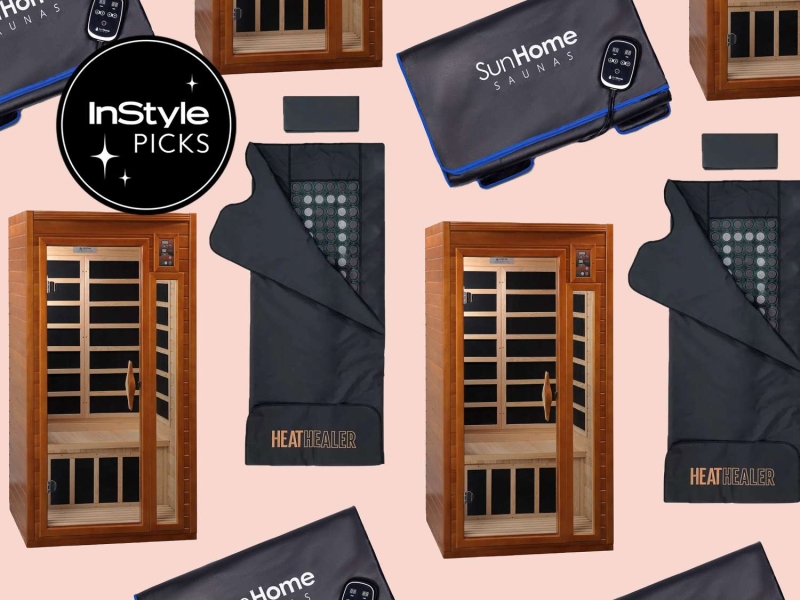Contents
Find your bliss without leaving the house.
One of our favorite features of a solid spa is a sauna. There’s just something about sweating it out in a toasty room that feels both relaxing and productive — we’re detoxifying our bodies, soothing muscle tension, and reducing inflammation, all by sitting still. It’s what makes the concept of bringing a sauna into our home so appealing.
No matter which you pick, most home saunas are an investment, so you’ll want to know what you’re getting into before you buy one — and that’s why we vetted the buzziest sweat boxes for you. Over the course of a month, we sweated it out ourselves in seven home saunas, judging each one for comfort, speedy (and easy!) home set up, safety features, temperature range, and whether we needed an engineering degree to operate the saunas ourselves. Most critically, we reflected on how our minds and bodies felt post-sweat session. These five home saunas gave us the best feel-good healthy vibes and the fewest annoyances to set up, clean, and maintain.
Best Overall
Heat Healer Infrared Sauna Blanket
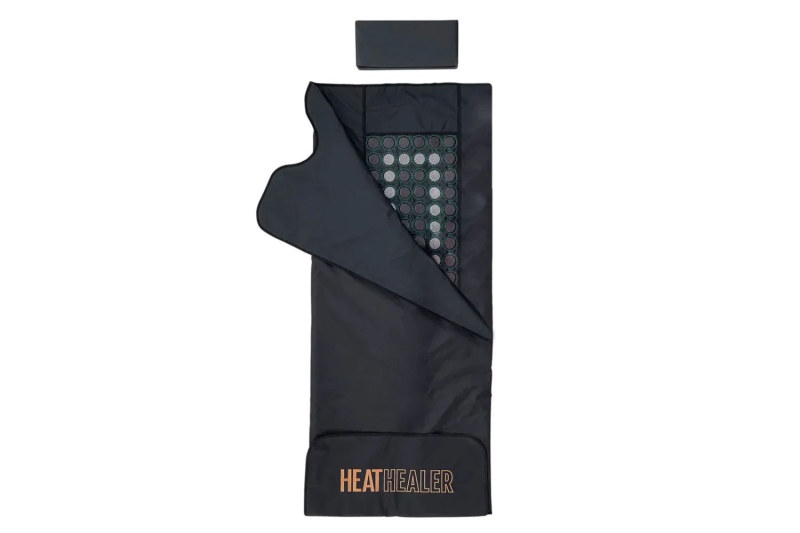
View On Heathealer.com $509
What We Love: Setup, heating, and breakdown are speedy and it is very easy to clean.
What We Don't Love: Our older model featured a velcro closure model; the new model uses a zipper which is much a better and tidier way to seal the blanket.
We’re regular sauna users at gyms and spas, so when we decided to buy our own, we did some seriously thorough research before investing in this one. We’ve been using this blanket (more like a sleeping bag) for more than 500 hours over the course of two years and it hasn’t disappointed us yet. It takes two or three minutes to unfold it — we use it on the floor or on the bed in front of our TV — and just 10 minutes or so for it to heat up. (At a maximum heat of 176 degrees, which might be too much for many people, this is the toastiest sauna tested for this story.) Despite our six-foot-plus frame, we fit inside comfortably, and didn't need help from another person to seal it up; it was also easy to get our arms in and out of the blanket to sip water, wipe down sweat, or extricate ourselves after a session. We also like how straightforward the remote is, with only four buttons: Power, start, time cycle, and temperature cycle.
Though the fabric of the blanket isn’t the most luxurious, we didn't find it uncomfortable, especially considering we usually line the inside with a towel to soak up sweat and create a barrier between our skin and the very high temperature of the bag. That heat is also why we wear socks during our session — it really does get quite hot in there! Beyond the fabric lining and infrared technology, the blanket is embedded with 96 jade and tourmaline stones, which heat up and emit negative ions, which promote relaxation. We will say that the warm stones are very comfortable to lie on; it’s kind of like a hot stone massage every time you use the blanket.
Once we’re done, all we have to do is fully unzip, wipe down the interior with a mild cleansing solution, and let it air dry. At no point in our two years of use have we ever noticed debris or grime on the inside of the blanket — it always smells and looks fresh, and there’s no fraying or tearing of the fabric, even though we rely on it often. Packing it up is a breeze, too — it rolls up neatly into a travel bag, making it portable enough to take our wellness on the road to attend races or tournaments.
Overall, we have no complaints, aside from the fact that our older model uses velcro to close the bag; threads from our towels have built up in the velcro over the years. However, Heat Healer’s new model uses just a zipper, which was the only change we’d wanted to see!
Type: Infrared|Capacity: One person|Indoor/Outdoor: Indoor|Temperature Range: Up to 176 F|Materials: Heat-resistant amide fabric|Size: Fits individuals up to 6'6" tall and 300 pounds; blanket is 75" long and has a circumference of 69"

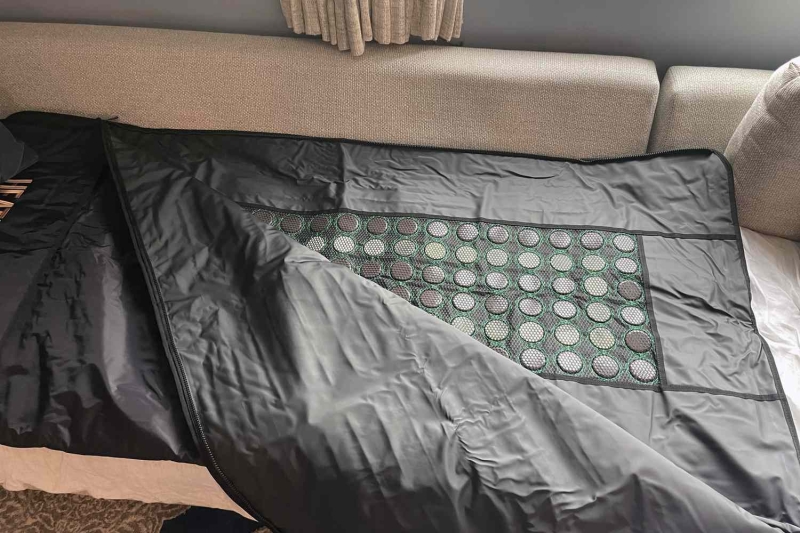
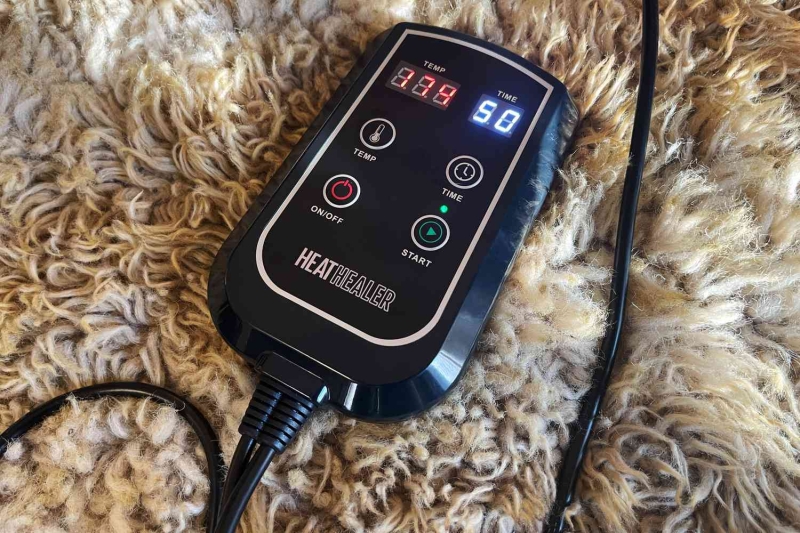

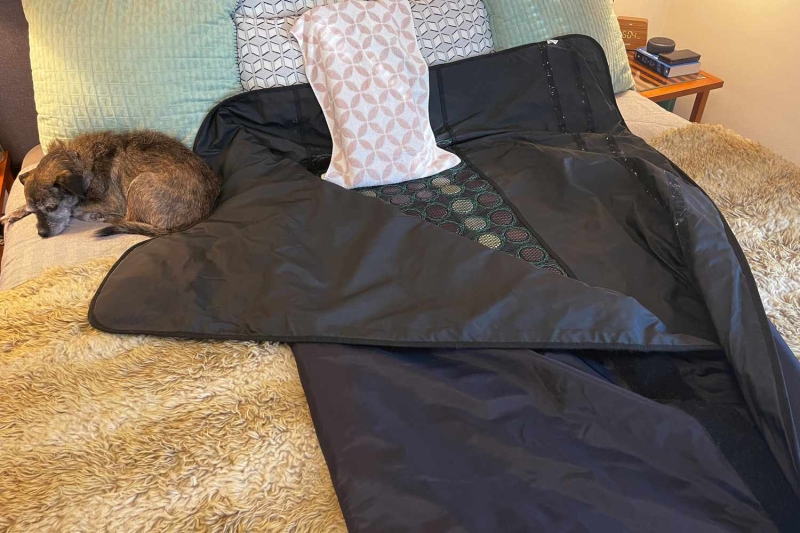
Best Blanket
Sun Home Saunas Infrared Sauna Blanket
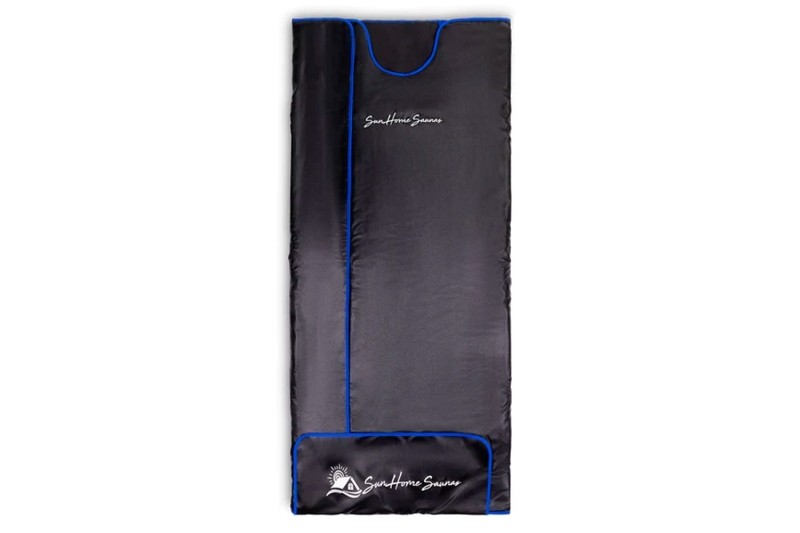
View On Sunhomesaunas.com $499
What We Love: This sauna can be used comfortably throughout your home and feels like a cozy weighted blanket.
What We Don't Love: The heat display only shows the temperature setting in Celsius, not Fahrenheit.
As first time sauna blanket users, this one was intuitive and easy to use. It took us about five minutes to fully unpack, unroll the sleeping bag-like blanket, and “install,” which we did on the floor, bed, and even on the couch, making our experience using it very comfortable. It needed approximately 15 minutes to fully heat up; you can wait inside the bag, which expedited our moment of zen — the heft of the product felt like a weighted blanket, which was very relaxing. We didn’t notice any cool spots in the bag, and as we zipped up, we appreciated the two flaps of fabric that went over our shoulders, which helped prevent heat from escaping (though a bit of cool air was able to get in around our neck).
The inside of the bag felt like a heavy-duty trash bag, which definitely helped us sweat, but got a little sticky during our session. This was easily rectified by slipping a towel inside, which also shielded our skin from direct exposure to the hottest spots, making for a more comfortable session and much easier clean-up (just unzip and wipe down the interior with a damp washcloth or a natural home cleaning spray). Once it dried, we either rolled it back up or just slid it as is under our bed — it took up practically zero space, which was great for our small NYC apartment.
We’ll admit we were initially wary of this product’s quality when we set it up, as the instruction manual had poor grammar and sentence structure (the instructions were clear, but we were still hesitant). That said, we were pleasantly surprised to find that this blanket was pretty much everything we were looking for in a portable at-home sauna and loved how it reduced our seasonal muscle tension. The only thing we’d change is the temperature setting on the remote; we wish it could be changed from Celsius to Fahrenheit.
Type: Infrared|Capacity: One person|Indoor/Outdoor: Indoor|Temperature Range: 95—167 F|Materials: Polyurethane|Size: 71” by 71" unfolded; maximum interior circumference is approximately 65”
Best Infrared
Dynamic Barcelona 1 to 2 Person Hemlock Wood Low EMF FAR Infrared Sauna

View On Amazon $2,310 View On Findyourbath.com View On Nurturemobility.com
What We Love: You can buy this sauna on Amazon and the door seals heat very well.
What We Don't Love: It takes a while to heat up and it’s more comfortable to use solo.
We’ve used saunas before at spas and the gym, but only the steam kind, which we don’t enjoy, so we really liked this infrared sauna. It features a simple control panel, LED display for the time and temperature settings, light therapy, and speakers that can be used to play music via bluetooth or the included auxiliary cord (the latter of which is admittedly a little dated). It goes up to 140 F, which we really noticed after stepping out — the door has a very tight seal to prevent the warmth from escaping, so we felt very cold whenever we opened it after completing our sauna session.
It has traditional bench-style seating, which is reasonably comfortable, especially for shorter periods of time, and a towel rack and magazine rack, which were nice added touches. We found that regular use really alleviated our joint and muscle soreness, and we definitely felt more relaxed after using the sauna consistently over three months. Sometimes our partner joined in the sweaty fun too, and experienced the same satisfying results.
While this is a two-person sauna, it would be more comfortable for a solo sweat, or if both people are on the petite side. With our partner standing tall at six feet, it cramped our style slightly — our arms and legs were touching the whole time and we didn’t love feeling their sweat on our skin. However, they came in handy during setup: Though it took only about an hour to set up, we did need to do it together (the instructions were confusing) using a drill.
Our biggest wishlist feature for this sauna, though, is a faster heating time. It takes about 30 minutes to heat up to its highest temperature and we learned the hard way that if we didn’t add that amount of time to the length of our preset session setting (typically 20 minutes), the sauna turned off before it was ready for us to use it. Now, we just wait for it to get to 100 F and sit inside as it fully warms up.
Type: Infrared|Capacity: Up to two people|Indoor/Outdoor: Indoor|Temperature Range: Up to 140 F|Materials: Hemlock wood|Size: 39” wide by 36” deep by 73” high

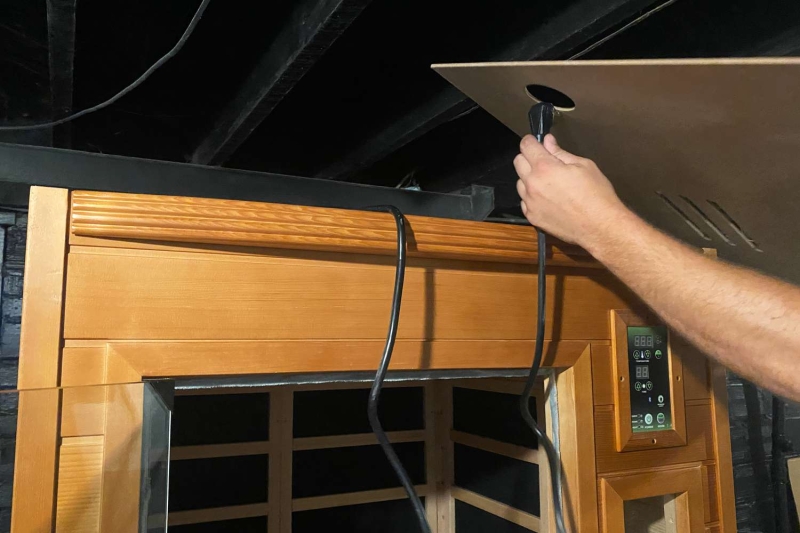
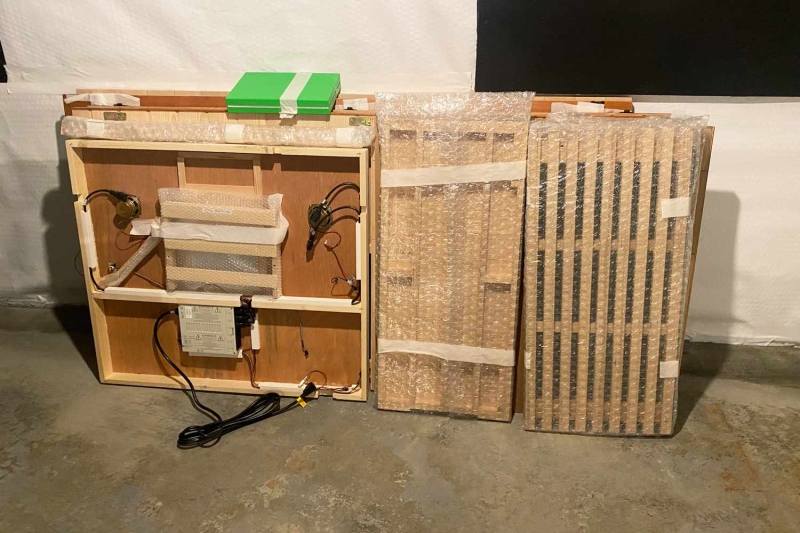
Best Steam
SereneLife SLISAU35BK Full Size Portable Steam Sauna
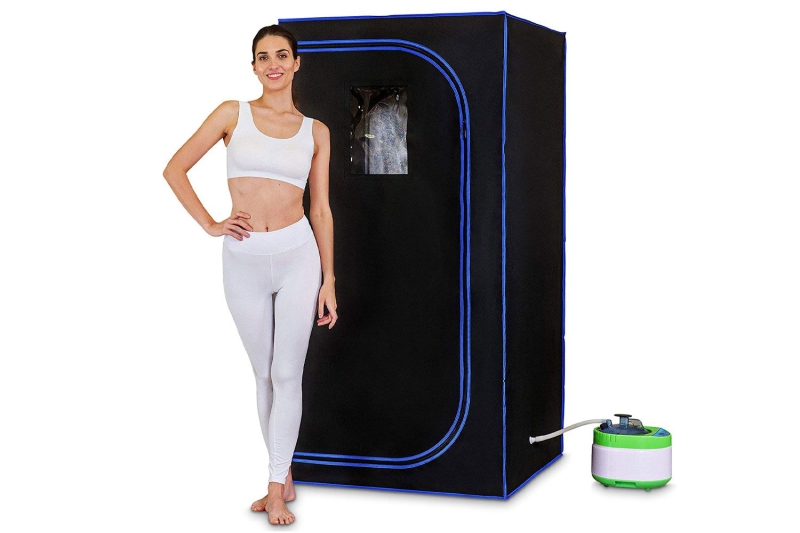
View On Amazon $252
What We Love: It was very comfortable to sit in; our 6’2” partner also felt like he had plenty of space inside.
What We Don't Love: The tent is kind of inconvenient to break down every time you finish using it, so you’ll need to have room to store it fully set up.
This was the best budget-friendly at-home sauna we tried — the setup was fairly simple (especially with two people) and only took us about 30 minutes. It comes with a foldable chair, which was surprisingly comfortable, as was the inside of the sauna. We had plenty of room to stretch our legs while using it, which allowed us to fully relax. Even our 6’2” partner felt like it wasn’t too tight in there, making this a nice option for our tall friends. The sauna is easy to operate and has a small remote that can be tucked into a pocket inside the tent as well as a window on the zip-up door that helps us see if the sauna is steamy, hot, and ready.
If you like to really get your sweat on, this is the one for you! We found the fewer items of clothing we had on, the better — we usually opted for shorts and a sports bra or a bathing suit — because we always exited the tent fully drenched. (If you want to protect your hair, we recommend buying a shower cap, because we didn’t have one and encountered some serious frizz.) Because it’s wet inside, you won’t be able to bring your phone in with you and you’ll have to always remember to fully unzip it once you’re done to let it air out; we forgot once and it was still very damp in there 24 hours later.
We found that after using it for three months, this sauna really soothed muscle soreness after our weekly Pilates class and helped alleviate a bout of sinus pressure (it really cleared up our nose!). The only inconvenient thing about it is that unless you want to spend 30 minutes breaking it down and putting it back together every time, you’ll want to leave the tent as is. This means you’ll need to have plenty of space reserved for your sauna somewhere in your house. That said, we did end up breaking it down to make room for a party we hosted, and it was easy to put it back together again.
Type: Steam|Capacity: One person|Indoor/Outdoor: Indoor|Temperature Range: Up to 122 F|Materials: Bonded mylar and nylon|Size: 35.43'' long by 35. 43'' wide by 70.87'' high
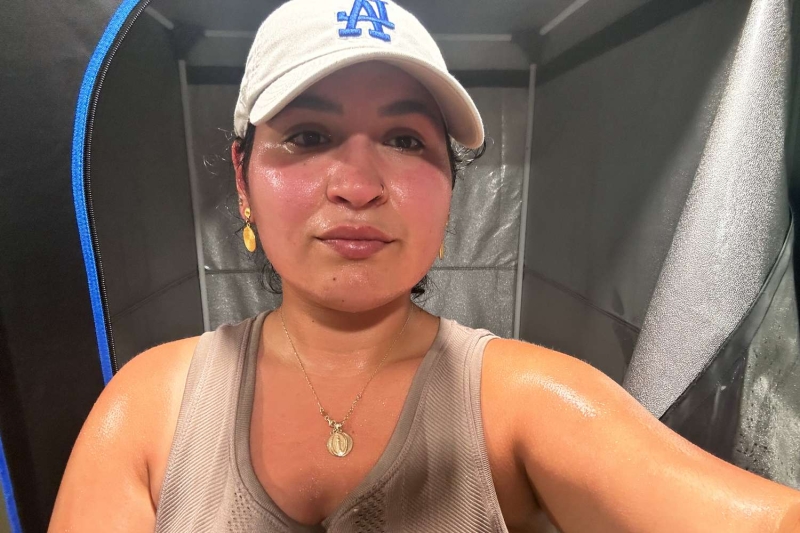


Best Outdoor
Sunlighten mPulse Smart Sauna Aspire
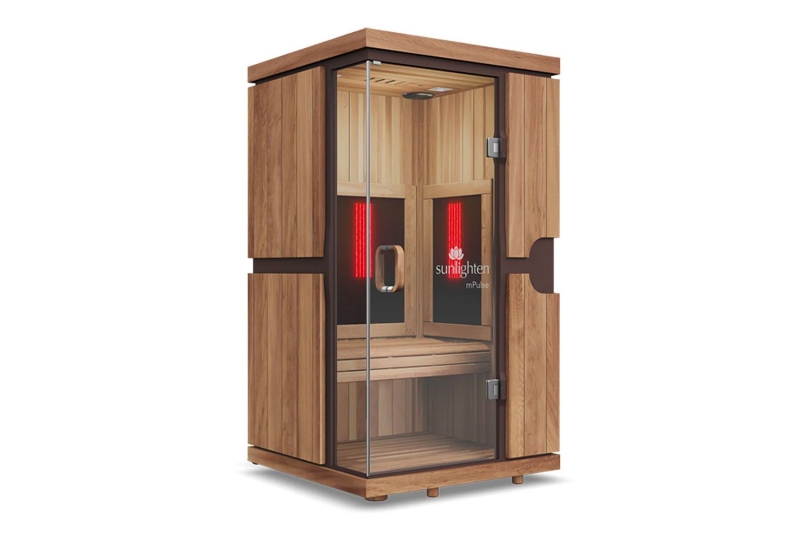
View On Aquavisionpool.com View On Northernsaunas.ca View On Sunlighten.com
What We Love: It comes with tons of fun bells and whistles to really customize your wellness experience.
What We Don't Love: This home sauna took us several days to install, and you'll need to buy a large cover to keep it outdoors.
Of all the saunas we tested, this was the priciest one, but it also offers the most convenient and high-tech features that made fun to use. Its power system is not merely an on/off situation — it comes with a tablet that allows you to cycle through seven different wellness programs, a tablet that you can use to create user profiles or play music through the included sound system, an app, and chromotherapy (light and color healing). Two people can fit comfortably inside, but though it is large and requires plenty of room for setup, we found it looked very sleek and stylish in our home.
It takes about 30 minutes for the sauna to fully heat up (just throw on a cozy bathrobe while you’re waiting); once it does, it seals well, with the heat spreading evenly throughout the entire interior. When in it solo, we used it for 30 to 60 minutes, sitting on the wooden benches, doing simple stretches, or just relaxing. As former members of a subscription-based sauna studio, we loved adding this home product into our routine and feel energized, refreshed, and detoxed after every use.
While it is very easy to use all the settings of this sauna and keep it clean, the setup (and the price) may be a deterrent. It arrived via delivery in three enormous separate packages that required DIY assembly. Ultimately, we ended up hiring someone to do it for us as we found it was too complicated. We also had to hire an electrician because we didn’t have the right type of electrical outlet (the other saunas on this list operate with standard outlets), which added even more time and money to the installation — but we have no regrets.
Type: Infrared|Capacity: One person|Indoor/Outdoor: Indoor + outdoor with weatherproof cover|Temperature Range: Up to 150 F|Materials: Available in basswood, eucalyptus and eucalyptus exterior/cedar interior)|Size: 43.6” wide by 41.6” deep by 78.5” high
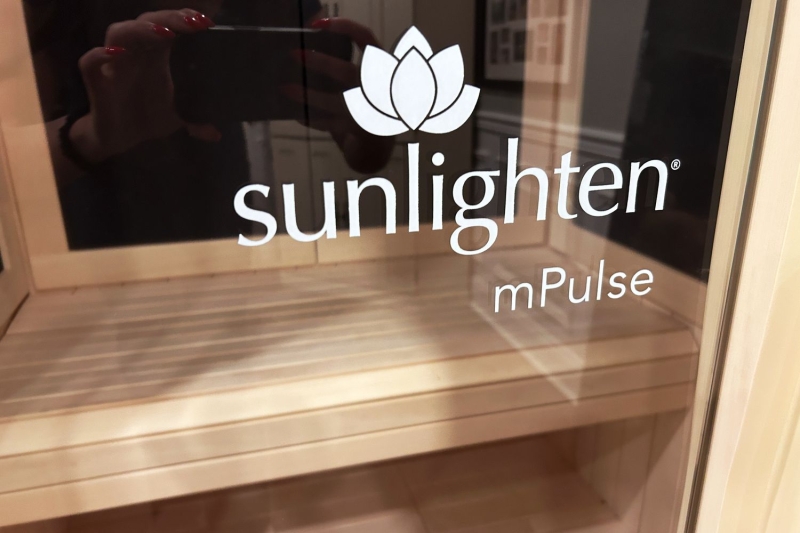
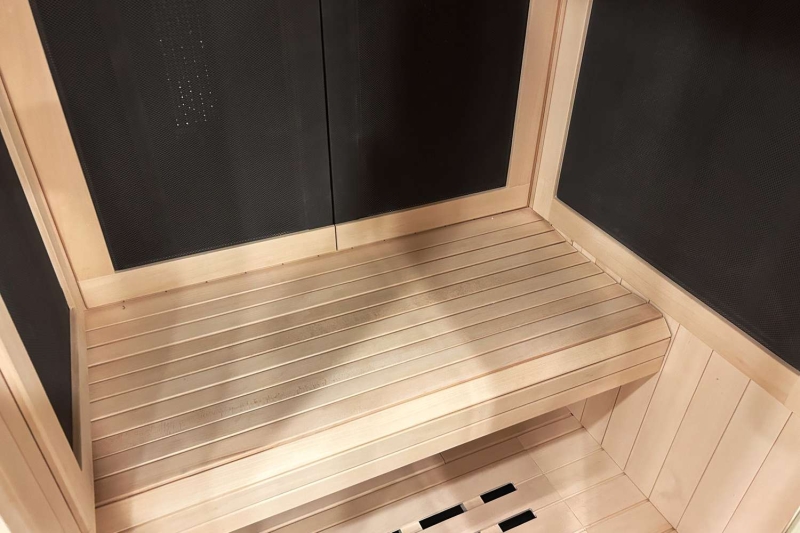
What to Keep in Mind
Type of Sauna
There are three different types of sauna: Traditional or dry, steam, and infrared (we’ve only included the latter two in this article). “Each sauna variety has a number of different benefits for both mind and body relaxation; a lot of it comes down to personal preference as to whether you enjoy a dry heat or an environment with a higher humidity,” explains Andrea Trillo, the Barcelona-based global marketing director of Aire Ancient Baths.
The dry type is what most people think of when imagining a sauna — a room filled with still, hot, dry air lined with wooden benches. Trillo says that they emit very high temperatures (anywhere from 176° to 230 F) and feature humidity levels of five to 25 percent. This can do great things for the body. “The warm temperatures help to slow the heart rate, relax the nervous system, and promote relaxation,” says Trillo. “These environments also help to boost circulation throughout the body, aiding with muscle repair and recovery.” A 2015 study even shows that using a dry sauna can significantly reduce your risk of cardiac death and heart disease.
Steam saunas are what you’ll find at many spas. Largely recognizable as a traditional sauna, these watertight rooms are powered by a stove or hot rocks up to 115 F (usually), and tend to feature a tiered seating structure — there’s a reason for this. “Those who want a more intense experience can sit higher up where there is a higher concentration of steam,” Trillo says, but if you’re looking for a slightly cooler effect, just sprawl out across one of the lower levels. Trillo adds that steam rooms promote skin purification (after all, they make you very sweaty!), while board-certified dermatologist Dr. Ariel Ostad notes that they’re also great for people managing respiratory problems.
Infrared saunas are the newest form of technology on the sauna scene, and they use (you guessed it) infrared heat, a form of energy that emits radiant heat at a deep wavelength. This means that instead of circulating hot air to create high ambient temperatures, saunas that use infrared heat directly warm the body with lower temperatures, which most people find more comfortable; expect average settings to be typically between 109 F and 150 F. For this reason, those with sensitive skin may do best with infrared saunas, says Dr. Ostad.
But don’t assume they’re not as powerful because they don’t get as hot: “Infrared rays are absorbed deeper into the body tissue and can cause two to three times more perspiration, as the infrared heat penetrates the skin and deep into the muscles,” says Trillo. This deeper detox makes an infrared-powered sauna especially helpful for post-workout recovery or those with chronic pain issues, says Dr. Ostad. To take your wellness journey one step further, Trillo recommends finishing a session with a cold shower or plunge, as a sharp temperature contrast is known to prevent post-workout swelling and tightness.
Regardless of which sauna you pick, they offer heaps of health and wellness benefits, including improved blood circulation, skin hydration, anti-aging benefits, and reduced stress levels (which cuts back on inflammation), says Dr. Ostad. “Sitting in a sauna for about 30 minutes can also increase heat shock proteins,” he adds. “Heat shock proteins provide protection against cellular stress, which prevent protein disorder by repairing proteins that have been damaged, providing protection against chronic diseases.”
Saunas can be found both indoors and outdoors, and many even opt for a more hidden alcove, like the basement or garage, says David Hansen, founder of David Hansen Carpentry (although placement ultimately depends on power sources and the structure’s foundation). For the most part, you can build your home sauna anywhere you’d like within your house.
Size
When determining which sauna to buy, how much space you have is one of the most important factors to consider. “Saunas can vary greatly in size, from portable folding and collapsible soft-sided units to free-standing, outdoor, multi-person occupancy saunas,” says Hansen. You really need to know how much room yours will take up both during the setup process and once it’s ready to use. For example, you may receive three huge boxes on your doorstep to take apart and build (and temporarily take over your entire apartment).
Also keep in mind any bulky items your sauna might come with, like a heater or power source. All of the saunas on this list have heaters that are directly within the device itself, but some may have external heaters, such as gas- or wood-powered stoves, usually within outdoor-use saunas, but take up extra space nonetheless. If your sauna requires proper airflow, add that to your list of requirements, too. “Most saunas don't need to be vented, but refer to install instructions before choosing a location, as it is possible that a gas sauna may need to be vented,” says Hansen.
And, perhaps obviously, if you want more than one person to fit in your sauna, you’ll need even more room for it. (Interestingly enough, though, multi-person saunas won’t take longer to heat up: “If the sauna is sized appropriately, it is fully heated within 20 minutes at its set temperature, regardless of the number of people or the sauna's structure,” says Trillo.)
But if you live in a small apartment, you likely won’t want to take up valuable real estate with a full-sized sauna or even a tent-style product, a sauna sleeping bag hits the spot.
Materials
Most of the saunas on this list are portable and made with fabric; if this is the type of product you’re looking for, make sure you’re buying something made of high-quality, heat-resistant, and waterproof fabric. Common materials are thick and bulky, like bonded mylar and nylon, polyamide, and polyurethane, since cheaper fabrics have a shorter lifespan and more importantly, don't retain the heat as well.
Heavier-duty box-like saunas are typically wood structures, and options range from cottage-core cedar, to fancy-feeling eucalyptus, and tropical woods — they're all beauties, and of course, design taste and preferences will vary from person to person. “Cedar and hemlock have nice aromatic qualities and good rot resistance,” says Hansen. “However, they are softwoods, which tend to show marks and scratches.” If scratches bug you, try tropical wood like abachi, or eucalyptus, which is a hardwood and will give off that signature spa scent.
However, if you opt for a spa-like steam sauna, a marble structure is your best bet. “This material is not impacted by excessive water exposure,” says Trillo.
Installation
The difficulty level of installing an at-home sauna is really a choose-your-own-adventure type deal. “Install and usage can be simple with portable units, or complex, needing a builder to pour a cement slab to build outdoors,” says Hansen.
If you want an easy, breezy setup, a tent- or blanket-style sauna is pretty much foolproof with minor (if any) assembly. If you’re going for something sturdier, though, prepare to commit a little time and effort — and possibly more money to hire a handyman, particularly if the sauna has high-tech features or heating systems. Although not to brag…but two people without a hint of construction experience were able to build the most intricate option on this list in one hour (the manual estimated two), which our partner still brags about.
You’ll also need to consider the placement, says Hansen. “You would need to find a location that will tolerate moisture if you choose a steam sauna, such as a tile or concrete floor,” he explains. Remember to also consider your power source, whether that’s a dedicated electric circuit or gas. “Access to a gas source should be researched before deciding on installation location,” Hansen advises.
Your Questions, Answered
Do home saunas use a lot of electricity?
For the most part, no! The amount of electricity a home sauna can use ranges anywhere from that of a hair dryer to your kitchen’s oven. Most saunas can be plugged directly into your wall and even share the power source. Larger units may require a dedicated outlet, though.
How much does a home sauna cost?
This varies wildly depending on the type of sauna you purchase. Blanket- and tent-style saunas tend to cost a few hundred dollars, but more complicated, immovable saunas can cost tens of thousands of dollars.
If your product is simple, installation will cost you nothing, though more complex ones may need the help of professionals, so be sure to account for this when budgeting for your at-home sauna.
Overall, maintenance tends to be fairly cheap, unless you need to make repairs, such as replacing lights or fixing any damage to your device (be sure to check your warranty!). Other aspects that may cost money over time include any aromatherapy refills or cleansing supplies.
Then, there’s your electricity bill. To figure out how much your sauna will hike up your electricity bill, figure out how many watts it uses per hour. Use that number and multiply it by your local electricity rate. Blanket and tent saunas use anywhere from 500 to 1,500 watts. If you used your sauna for an hour a day for a month, this would cost you around $3.50 a month. Larger units use more watts (the ones on this list range from 1,000 to about 2,200); daily use for a month will cost $7 on average.
Is a wet or dry home sauna better?
That comes down to personal preference. “Wet saunas, like steam, have benefits not just for the muscles and joints, but also for the respiratory system, and the incorporation of essential oils into the vapor really allows guests a space to breathe deeply and find a place of calm,” she says.
If you prefer dry heat, though, a traditional sauna is best for you; people who can’t handle very high temperatures should try infrared.
Are home saunas high maintenance?
While testing the saunas for this story, we found that they were pretty low key. Light cleaning with baking soda, water, and/or a home cleaning product as well as proper ventilation was all that it took to keep things tidy and sanitary. Fabric products may not be as durable as large structures as wood tends to be hardier.
Ultimately, if you treat your sauna well, it’ll be good to you. “With routine maintenance, testing, and cleaning, saunas should last years with proper care,” says Trillo.
Why Shop With Us
Emily Orofino is a beauty writer, editor, and consultant with more than a decade of experience in the industry. She has always been tempted by the thought of owning an at-home sauna and, while working on this piece, decided to invest in one. To learn more about them for this article, she interviewed Andrea Trillo, the Barcelona-based global marketing director of Aire Ancient Baths, New York City board-certified dermatologist Dr. Ariel Ostad, and David Hansen, founder of David Hansen Carpentry in Madison, Connecticut.
Sources InStyle uses only high-quality sources, including peer-reviewed studies, to support the facts within our articles. Read our editorial process to learn more about how we fact-check and keep our content accurate, reliable, and trustworthy.
Laukkanen T, Khan H, Zaccardi F, Laukkanen JA. Association between sauna bathing and fatal cardiovascular and all-cause mortality events. JAMA Intern Med. 2015 Apr;175(4):542-8. doi: 10.1001/jamainternmed.2014.8187. PMID: 25705824.
